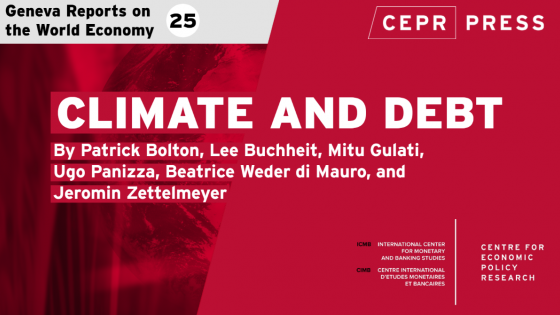Advanced economies account for most greenhouse gas emissions and were able to develop their economies using brown technologies. The effects of climate change are also disproportionately being felt among developing countries who are low emitters, most vulnerable to the effects of climate change, and are at greater risk of debt distress. This report argues that this creates a moral obligation for advanced economies to provide fiscal support for countries to adopt green technologies and implement adaption techniques to work towards a net zero economy.
The report provides six policy recommendations focusing on financial instruments as a means of incentivising and committing governments to facilitate fiscal space for climate investment in countries that could not otherwise afford it:
- Develop a clear legal framework and verification mechanisms which will enhance the credibility of green sovereign bonds, which currently lack effectiveness because they promise little or nothing that would be legally enforceable.
- Set up a climate information and monitoring system to support the development of sustainability-linked sovereign bonds which are more flexible and incentive-compatible than traditional green bonds.
- Create an institutional framework for a carbon credit market based on mandatory direct and indirect carbon emission reduction requirements for all large emitters. A well-working global carbon market could generate substantial flows from rich to poor countries and help monetise the natural assets that these countries hold.
- Commit to an annual target for fiscal support for adaptation, mitigation, and transition expenditures in developing and emerging market countries. Advanced and high-emitting upper-middle-income countries will need to provide fiscal support at least for the countries whose mitigation and adaptation costs exceed their fiscal capacity, and on fairness grounds they should go beyond this minimum.
- Improve the design of debt-for-nature swaps, which should seek to ensure that climate or conservation-related expenditure commitments are honoured even if the debtor is forced to restructure its commercial debt.
- Include climate-conditionality in comprehensive debt restructurings addressing unsustainable debt. One way to achieve this objective is by exchanging the conventional bonds that are being restructured with appropriately defined sustainability-linked bonds.
Implementing these policies demands substantial political will from both developed and developing countries, and progress will be made through the utilisation of policies which best suit individual country circumstances, bearing in mind their limitations and the potential trade-offs. The alternative, however, is failure to adequately address climate change while there is still a chance to have a meaningful impact. Generations to come will inevitably suffer the consequences of today’s failures.
To contact the authors or for further information, email CEPR Press Officer Alexander Southworth: [email protected].



